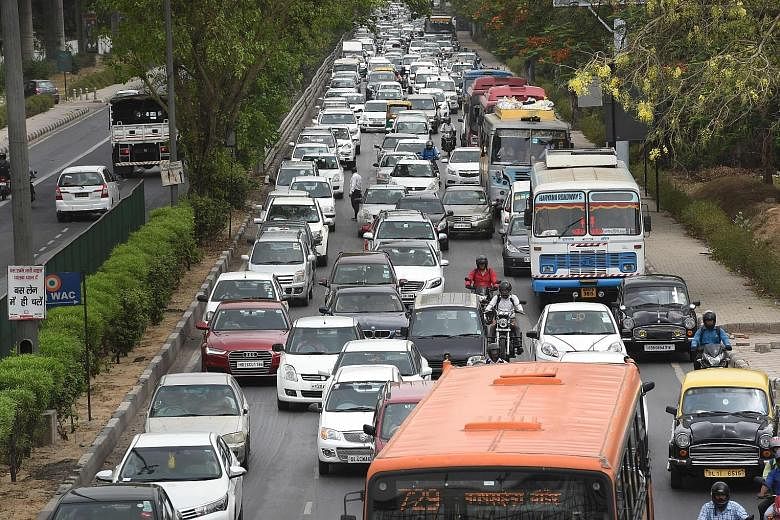A plan by a government panel that recommended spending 197.62 billion rupees (S$4 billion) on public transport to ease traffic in Delhi has been welcomed by traffic experts and environmentalists, amid worries over rising pollution and gridlocked roads in the capital.
The panel on decongesting Delhi roads, which submitted its report last week, suggested a "carrot and stick" policy to increase use of public transport and stop people from using their cars by substantially hiking parking charges - which is 10 rupees for an hour in many places - and introducing a congestion tax.
It said the focus of traffic planning should be on expanding the bus fleet - recommending 2,000 new buses to be bought immediately - and creating cycling and walking tracks over the next five years.
But it advised against more flyovers, road widening projects and high-speed corridors that encourage people to use their vehicles.
While experts laud the principle of focusing on public transport, there are concerns that the recommendations will remain on paper.
"It has to be translated into an implementable schedule of plan so we know what is the scale of the intervention," said Ms Anumita Roychowdhury, executive director of the Centre for Science and Environment.
The report has been sent to the Delhi government for action.
Delhi, which has a population of 16 million, adds 1,400 vehicles every day, with 8.4 million vehicles last year. Cars, buses, two-wheelers and auto rickshaws fight for space, with traffic jams common even during non-peak hours.
A metro rail network, which is being expanded constantly, has taken some load off the roads, but years of rising incomes have seen well-to- do families owning at least two cars.
In recent times, the government and courts have sharpened their focus on traffic congestion amid rising pollution, with the National Green Tribunal imposing a green tax this year on trucks entering Delhi.
The Delhi government has also implemented restrictions on cars entering the city twice this year, with cars with odd-number plates allowed on some days and those with even-number plates on other days.
But the situation remains chaotic, said traffic experts, with disparate action being ineffective.
"We have two major issues... transport planning and traffic engineering. Traffic engineering which tells you where you need parking, for instance, is lacking in India," said Dr Rohit Baluja, president of the Institute of Road Traffic Education.
Delhi also has the biggest road network with 21 per cent of road area, while Mumbai has 12 per cent and Kolkata 6 per cent.
"There is limited scope for increasing road surface. So the report has suggested better utilisation of existing roads and traffic management," said an urban development ministry spokesman.
The Delhi government is also looking at introducing premium bus services to lure car owners to public transport. But sceptics remain.
"The problem is there is no coordination and traffic congestion is not taken as seriously as it should be," said Mr Anil Chhikara, a Delhi transport official.

